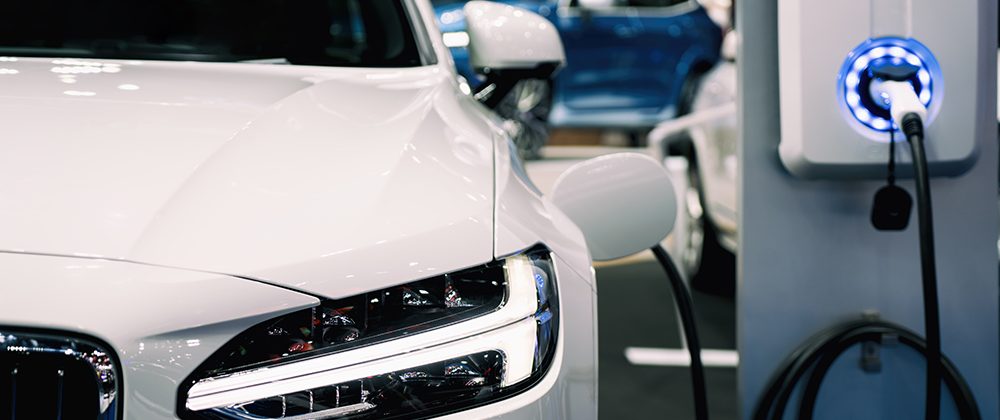As the UK government pushes forward its plans to reach carbon net zero, electric vehicle (EV) ownership has been one of the areas at the forefront of this ambition. While there is a positive upward trend of EV purchases, this has brought about concerns about whether the country’s infrastructure is prepared for such a shift in electricity use. Matt Price, Director of Transport Planning at innovative engineering firm Hexa Consulting, and Alex Skidmore, Associate Director at mechanical and engineering (M&E) consultancy firm Chord Consult, discuss the challenges for the transport, planning and energy industry and how it needs to respond.

There are less than seven years to go before the UK is expected to meet its fossil fuel car ban in 2030, meaning the race is on to address a significant number of issues.
Climate Change Committee, the statutory net zero watchdog, described the rising electric car sales as ‘glimmers’ of reaching net zero but criticised the ‘worryingly slow’ action to scale up this response. It also argued that ‘restrictive planning rules’ were hindering essential upgrades to the electricity grid and other elements of net zero infrastructure, and that ‘rapid reform’ was needed to ensure planning decisions ‘give full regard to net zero’.
Despite the lack of affordable options for many households, EV ownership has risen over the past few years, with sales actually outstripping new diesel vehicles in 2022. Price explains: “This trend has been influenced by a range of factors including individual owners’ desire to reduce their carbon footprint, through to the cost of fossil fuels, increasing mileage range and taxation benefits. As transport planners who specialise in the development of the built environment, we too have been seeing changes in the policy drivers for EV charging infrastructure, as well as the objectives of developers and users.”
Expanding the grid
While this increase in EV use is welcome news for the UK’s green transport ambitions, there are significant infrastructure challenges around how to support EV growth. One question is around the amount of electricity needed for transport that will be generated and stored to support the transition to EV usage.
Skidmore explains: “EV charging points introduce a significant load to the National Grid. When looking to introduce this additional load, industry experts and network analysts from district network operators (DNOs) are often unable to easily facilitate the level of connection requested.
“Additional substations, costly upgrade works, and lengthy mobilisation periods are all options, but as an industry, perhaps it makes more sense to tackle the problem by making our existing infrastructure more efficient.
“With more and more of us now considering taking the plunge into the world of EV travel it is time for the industry to bring an ageing grid infrastructure to the fore and begin to take positive steps towards its adaptation.”

Infrastructure improvements
“The existing infrastructure needs modernising to make it more resilient, reliable and efficient,” Skidmore adds. “This could mean upgrading the antiquated infrastructure or improving grid monitoring and control systems – potentially including the use of advanced grid management. Solutions such as smart grids, energy storage and demand response programs can help optimise how the existing infrastructure is operated to better manage increased demands.
“By increasing the capacity of renewable resources such as photovoltaic (PV) systems and wind turbines, we can also help generate more electricity closer to the point of consumption, which in turn will alleviate the strain on the centralised grid.
“We could also consider incentivising energy storage technologies such as batteries to hold excess electricity during periods of low demand and then release this during times of high demand. This can help balance the intermittent nature of renewable energy sources, increase grid stability and generally support increased demand.
“Lastly, specifically for EVs, the introduction of intelligent load management systems could dynamically control and optimise the charging of electric vehicles based on either grid conditions or agreed user capacity utilisation.”
EV equality
One of the main issues is the variation within UK cities for public EV charging points, largely due to the cost of installation or retrofitting not being seen as a priority by both local authorities and private developers.
The most recent figures show at the end of May 2023, there were 43,626 electric vehicle charging points across the UK, across 25,413 charging locations. This represents a 38% increase in the total number of charging devices since May 2022.
Price said: “EV charging provision is not the sole responsibility of new development; a significant proportion of the existing EV charging infrastructure has actually been implemented by local authorities, supported by central government funding (such as the Local Sustainable Transport Fund) or by private EV charging operators in public parking areas.
“However, we see significant disparities between the number of charging spaces available and the number of EVs in use locally. It’s fair to say that the provision of EV charging infrastructure has not kept pace with the increasing ownership of EVs.
“The worst performing area in mainland UK is the North East, with less than 1,500 charging points (3.4% of the total) while the best performing area is Greater London with more than 13,000 points (30.8%). As of January 2023, there were 37,055 public charging points for vehicles in the UK, an increase of 31% based on the previous year.”
But as the UK makes this transition and it is largely accepted that EVs are what will be taking over our roads in the future, the industry needs to enhance and support this pathway with the appropriate infrastructure provision.
“Local planning authorities really need to catch up with charging infrastructure and developers need to embrace the need for EV charging provision, as opposed to seeing this as an additional cost,” Price added.
“While it’s not universally accepted that cost is the only reason for delay, until fairly recently it was only London boroughs with clearly developed and enforceable car parking standards, which include active and passive EV charging space requirements for new development.
“The majority of local highway authorities have now designated EV charging car parking policies. However, in our professional experience, these can vary wildly not only in terms of the proportion of new parking spaces – which are meant to enable EV charging – but also how well these are enforced by the authorities that adopted them.
“Some authorities fare better than others too. While many have not adopted any EV charging space standards for new development, others such as Nottingham have done more. Not only has the authority adopted EV charge space requirements for new development, but it also is one of the first places to introduce EV-only traffic lanes and now the UK’s first wireless and inductive EV charging taxi rank – similar to a phone on a charging pad.
“This trial recently ended and while expensive, the feedback was generally positive so it is hoped that as technology develops and costs fall, the ability for more vehicles to charge ‘on the road’ without needing to plug in would be universally adopted.”
Sparking a change
While electric vehicles are a vitally important aspect of the road to net zero, Price points out it is not a ‘magic solution’ for climate change. “They still produce emissions from their manufacturing, maintenance and disposal,” he adds. “They also depend on electricity generation, which may not be entirely renewable or carbon-free.”
But while EVs cannot eliminate carbon emissions entirely, a large shift away from fossil-fueled vehicles is still needed to fundamentally reduce transport’s impact on the environment.
Price added: “Though there is still a long way to go, we’re optimistic about the future of EVs. While EVs don’t solve problems like congestion, from a carbon reduction perspective it now feels as though they are the next best chance we have to decarbonise our transport network. Given this contributes 34% to the UK’s total carbon emissions, then it has to be a step in the right direction even if we don’t know quite what our destination will be.”




